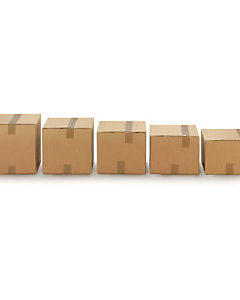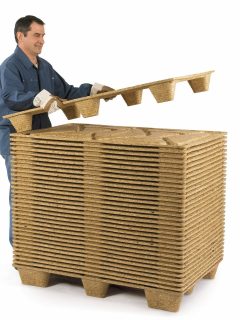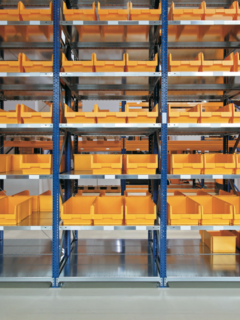Packaging optimisation not only has environmental benefits, but also economic benefits in the form of cost reductions. Sub-optimal packaging increases costs not only due to unnecessarily large quantities of packaging material, but also due to higher transport costs. So how to optimise packaging properly?
Pack size optimization is the design of a suitable package that is optimally sized and not unnecessarily large. However, you should also think about ensuring that the goods are still sufficiently protected during transport.
Factors affecting packaging costs are:
- the height and weight of the product(s) to be packed,
- the design of the packaging,
- packaging material,
- bulk density (in simple terms, the space the product takes up during transport).
If you decide to optimise packaging and transport costs, do not do so at the expense of the quality of the materials used. Otherwise, you may reduce your costs for boxes and filler material, but you may be passing the buck to dissatisfied customers who have received damaged goods. Packaging can be efficiently optimised in other ways rather than entering into the risk of using cheaper packaging material.
A critical cost factor in optimizing packaging is the shipping density of the package, which is the weight per cubic meter. Transporting 100 kilograms of feathers can be more expensive than transporting 100 kilograms of bearings. Designing a shipping package that makes the load fit better on a pallet or in a truck will reduce shipping costs. This can reduce the total cost of packaging materials, storage and transportation by up to 10%.
Find out the optimum volumetric (dimensional) weight of the package
Dimensional weight represents the density of a package, i.e. the amount of space a package occupies in relation to its actual weight. Most shipping companies, such as DHL, UPS or FedEx, use their own formula to calculate the dimensional weight of a package, which is then subject to individual shipping rates. However, it is simply calculated as a multiple between the length, width and height of the package divided by a coefficient that varies depending on the specific company.
According to FedEx, the biggest current trend in logistics is the reduction of packing density. This means that companies that don’t pack their products efficiently are literally paying the price. A shipment is optimally sized when the dimensional weight of the package is as close as possible to the actual weight of the package. This is because shipping companies determine the price for shipping based on whichever weight is higher.
Taking the effort to find out the optimal package size that will guarantee an adequate dimensional weight, and therefore the lowest freight rate, is an effective way to reduce costs. Instead of a one-package-fits-all strategy, we recommend trying individual packaging tailored to the products being transported.
On average, material costs account for 60% to 80% of the total packaging costs. The material cost depends on various parameters such as type, quality, construction or the manufacturer itself. Although at first sight it may seem that the less packaging material, the lower the cost, this may not be the case at all. In fact, from the point of view of the functional characteristics of the packaging itself, the exact opposite is true. The trade-off is to strike a balance between the design and the size of the packaging. Different designs of the same volume sometimes need different amounts of material. For some types of materials, ‘swapping’ the height and width of the packaging can save 20% of the material used.
Some advice on how to optimise packaging:
- Try not to exceed the weight limit of a shipment above 70 kilograms.
- Try to keep the packing length of a shipment to no more than 270 centimetres (108 inches).
- Try to keep the length and circumference dimensions within the shipping company’s limit, which would result in additional excess freight charges.
- If possible, use a rectangular package shape that can be constructed so that at least four packages are stacked on top of each other.
- Consider consulting an expert on the optimum size and construction of the package
If you optimize your package size, you will optimize your costs, and you will not only save money, but you will also reduce waste, have cheaper shipping and fewer claims.














